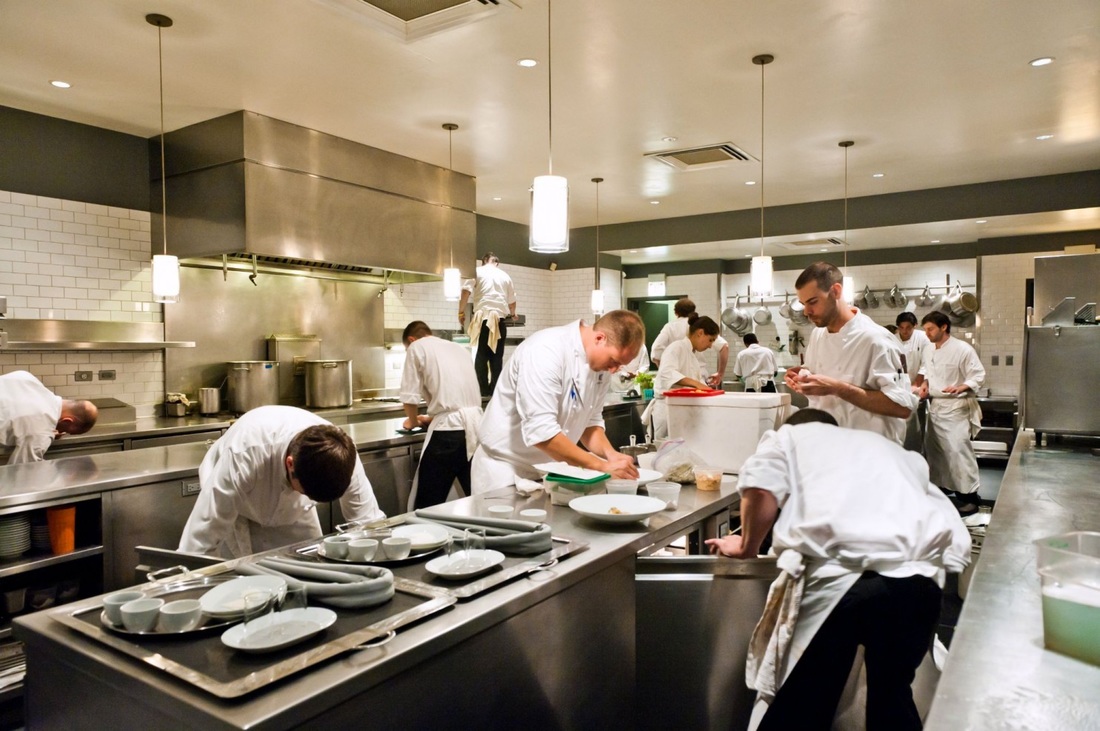|
By GARY VAYNERCHUK
Yesterday I started a new content series exclusive to my Snapchat called #snapchatsecrets. Why did I do this? Because I am super excited to get serious about Snapchat in 2016. I’m going to be using #snapchatsecrets as a place to lay out little business tidbits that have helped me and others. It’ll be a wide range of topics, from helping my audience create more compelling content to how to get more people to see it. So here are the first 5 #snapchatsecrets, but be sure to follow me on Snapchat (@garyvee) to hear more in 2016. #1: SNAPCHAT WILL BE HUGE IN 2016 Remember that attention is the number one asset. You always need to be ready to shift, to go where people are spending their time. In 2016, for an enormous number of people, that place will be Snapchat. The platform evolved very quickly in 2015 and showed their full potential. Get to know Snapchat now. #2: YOU DON’T GET ROI Most people who watch my stuff aren’t understanding what ROI really means. ROI comes from the platform you’re using to deliver your message, and figuring out platforms takes time. You all want the ROI without the time. Make time to give it your best effort or you’ll never get the return you want. #3: USE TRENDING HASHTAGS MORE WISELY Many of you want to grow your Twitter accounts, but are approaching it the wrong way. Big tip for you: instead of making a hashtag for yourself, build upon already existing ones. Hashtags are not ownable; but joining conversations in a meaningful way is. #4: GIVING A FUCK MATTERS So many people talk talk and talk and never give back. Someone on Twitter might be tweeting out content multiple times a day and then never respond or talk to anyone. Well let me tell you: engagement matters. Giving a fuck matters. Use these platforms for engagement as well as distribution. I spend hours of my day just responding to tweets, YouTube comments, Facebook comments…and it pays off. #5: YOUTUBE IS THE BEST SEARCH ENGINE TO LEARN A lot of you have told me you don’t understand Snapchat, or don’t get Facebook dark posts. To that I say: YouTube. Right now, YouTube is the greatest place to go to learn for free. There are videos and tutorials on absolutely everything. Whether it’s Snapchat, or Facebook or how to do a proper squat, YouTube has it. Thanks for reading! Expect way more content like this on my Snapchat in 2016. Follow me to get all the latest updates: Behind the swinging doors of restaurant kitchens around the country, things are getting a bit more chaotic. It’s not the sort of thing diners would have noticed, because it’s happening behind the scenes, out of view. Orders are still coming in, and plates are still coming out. But there’s a growing problem that chefs and restaurateurs are talking about more these days.
Good cooks are getting harder to come by. Not the head kitchen honchos, depicted in Food Network reality shows, who fine-tune menus and orchestrate the dinner rush, but the men and women who are fresh out of culinary school and eager. The shortage of able kitchen hands is affecting chefs in Chicago, where restaurateurs said they are receiving far fewer applications than in past years. “It’s gotten to the point where if good cooks come along, we’ll hire them even if we don’t have a position. Because we will have a position,” Paul Kahan, a local chef, told the Chicago Tribune last week. It’s also an issue in New York, where skilled cooks are an increasingly rare commodity. “If I had a position open in the kitchen, I might have 12 résumés, call in three or four to [try out] in the kitchen, and make a decision,” Alfred Portale, the chef and owner of Michelin-starred Manhattan restaurant Gotham Bar and Grill, told Fortune recently. “Now it’s the other way around; there’s one cook and 12 restaurants.” And it extends to restaurants out West. Seattle is coping with the same dilemma. San Francisco, too. The glitz and glamour of rising through the ranks in the restaurant industry isn’t what it used to be. Long hours, low pay and a series of other cultural and economic factors have made lower-tier restaurant work a much less desirable path than it once was, leaving many kitchens chronically understaffed. One of the clearest obstacles to hiring a good cook, let alone someone willing to work the kitchen these days, is that living in this country’s biggest cities is increasingly unaffordable. In New York, for instance, where a cook can expect to make between $10 and $12 per hour, and the median rent runs upward of $1,200 a month, living in the city is a near impossibility. As a result, people end up living far from the restaurants where they work. Add to that how late dinner shifts can end, causing people to arrive home well into the night. Top it all off with the fact that culinary school graduates are often working through significant amounts of debt, and the burden can be insurmountable. It’s not as if restaurants are cheating workers out of heaping piles of cash, either. There simply isn’t a whole lot of money circulating. The National Restaurant Association estimates that the median profit margin for mid-level establishments (those with average checks of $25 and higher) was 4.5 percent. Celebrity chefs and successful restaurateurs exist, but they are the exception. And a good deal of the money earned by the former comes in the form of television contracts, book deals, guest appearances and other tangential earnings. “The pay just isn’t there,” said Kim McLynn, a representative for industry research firm NPD Group. Some also worry that food television has created a pervasive, mistaken perception among young, aspiring chefs that success is earned less through patience and perseverance than it is through sudden fame. Cooking shows on the Food Network, Bravo and elsewhere, have spread a misleading sense that kitchen work is mostly creative and fun. The reality check that young cooks experience at their first kitchen shift can be crippling. “It’s tiny and hot, not much room to move,” Andy Ricker, the chef and owner of Pok Pok in New York told Grub Street in 2013. “You’re dehydrated, and it’s crazy busy; the floors are greasy; there’s flames and water. It’s not like being in Kitchen Stadium.” And then there’s another subtle but significant change happening across America that doesn’t bode well for the restaurant industry. After years of steady inflows of Mexican immigrants, who have proved both eager and talented cooks, the trend is reversing itself. The number of unauthorized immigrants living in the United States has leveled off over the past decade (it peaked eight years ago in 2007). By 2012, net migration to Mexico was already zero, or even negative, meaning that more Mexicans were moving out than moving in. That’s terrible news for an industry that has relied on the demographic. In 2010, the Bureau of Labor Statistics estimated that 1.4 million out of a total of about 12.7 million workers in the restaurant industry were immigrants. In 2008, the Pew Hispanic Center estimated that about 20 percent of the country’s more than 2.5 million chefs and cooks were undocumented immigrants. “I would be surprised if the slowdown in Mexican immigration isn’t responsible for more of the problem than many people realize,” said Tyler Cowen, an economics professor at George Mason University who has written extensively about the economics of restaurants. “This sector is, as anyone in it will tell you, kept afloat by immigrants, especially Latinos.” Cowen said that he thinks the improving economy is hurting the restaurant industry. As other sectors pick up, service jobs suddenly become less appealing, he said. “Improving economy, declining immigration and higher rents — those are the three main things creating the shortage of cooks,” Cowen said. Despite the issues affecting the industry, new restaurants continue to open, which could be exacerbating the problem. Just as the pool of potential candidates is thinning, more kitchen jobs are opening up, creating a growing supply and demand gap. The National Restaurant Association touched on this phenomenon in its latest industry forecast. “Growth in the number of hospitality job openings accelerated sharply [in 2014], a development that was out of sync with the pace of hiring,” the report said. If the trend continues, it will only be a matter of time before the problem spills out into the public, slowing service, deteriorating meal quality and, perhaps, forcing restaurants to close their doors. Source: https://www.washingtonpost.com/news/wonk/wp/2015/08/12/the-crippling-problem-people-who-eat-at-restaurants-havent-noticed-but-chefs-are-freaking-out-about/?postshare=6591451190725148&tid=ss_fb-bottom By Evan Hayes Dec. 14, 2015 When you own or manage a restaurant, you likely wear multiple hats. Your primary concern is ensuring your customers enjoy a high quality meal and leave to share their experience with their family and friends. You manage your employees, prepare the food, keep the books, handle supply, and interact with customers. When each day is over, the last thing you have time to do is develop and actively maintain an effective marketing strategy. Perhaps your social media presence has been nonexistent, or your once loyal customers are not returning as often as you would like.
This may sound like a lot to balance, and it is, but today there are marketing techniques that won't break the bank and will help you save time. Use these restaurant marketing ideas to take your business to the next level in 2016.
When the Internet was new to consumers, everyone loved email. One of the best parts of logging onto AOL was the knowledge that after minutes of agonizing squeals, you'd be treated to that wonderful phrase, "You've Got Mail!"
But after a couple decades of Nigerian prince schemes, Spanish lotto scams, and mountains of unsolicited spam (which is never a good marketing tactic), how do people feel about email now? Is it still a worthwhile tactic for small-business owners and marketers to pursue? The simple answer is yes. But you came here to learn, so here are the Top 5 research-backed reasons email marketing is vital for businesses of all sizes: 1. Email is an easy way to reach mobile customers. One reason email marketing has value for business owners is that it's an easy way to start reaching consumers on mobile without investing a lot in new technology or software. According to an April report from Pew Research Center, 52 percent of US cellphone owners access their emails from their phones. Email marketing also works with other mobile devices. In July, Forrester Research released a study that found 42 percent of retailers' email messages were opened by consumers on their smartphones and 17 percent were opened on tablets. This means that nearly three out of every five email marketing messages doubles as a mobile marketing message. Using email is better for mobile marketing than SMS because:
Email marketing isn't something marketers do just because they can and it's easy. The tactic is very effective at helping business owners and consumers stay connected. In fact, consumers often seek out email marketing campaigns from their favorite brands and local stores. This goes beyond coupons (which we'll discuss next). Nielsen reported that 28 percent of US online shoppers subscribe to store or product emails in order to stay informed. A study from Loyalty 360 stated that 59 percent of US moms would sign up for email updates from brands if rewards were offered. And email marketing can be used as a way to deliver content to consumers. A 2013 study by the Relevancy Group noted that marketers who add video to their email campaigns see an average rise in revenue of 40 percent. There is a real value to staying connected to customers and email marketing makes that easy to do. 3. Email coupons drive online and in-store sales. The Nielsen study mentioned above also found that 27 percent of US online shoppers subscribe to store or product emails in order to save money. This conclusion is backed up by recent data from Deloitte that found 65 percent of consumers say email coupons are important when grocery shopping online. Similarly, Shop.org reported 64 percent of US Internet users have printed a coupon from an email. Though consumers are looking to save money, it can turn into increased revenue for the retailer. E-coupons are big business, and email marketing is at its heart. The number of mobile coupons used is estimated to double over the next five years to reach 1 billion people. Email marketing is a good way to start reaching the growing number of online bargain hunters. The big brands are already using this tactic for that purpose. BIA/Kelsey reports that 36.6 percent of national businesses use email marketing for local promotions. 4. It's easy to customize and integrate into other marketing tactics. The versatility of email marketing is another reason marketers should keep the tactic in their marketing toolbox. Depending on the depth of the email database and the skill of the crafter, email marketing messages can range from simple to very complex. Emails can be personalized to include the name of the user and even more. A small study of 139 marketers from Retention Science found that websites use several kinds of personalization tactics that can easily be applied to email. Nearly half of US online retailers used personalized product recommendations (44.9%), about a third added the customer's name and/or a unique welcome message (31.5%), and a quarter of the respondents reported adding shopping cart reminders (27.6%) to cover all of their personalization bases. Email marketing can also be utilized with just about any other marketing tactic, which makes email an important part of any integrated marketing campaign. 5. Email marketing is inexpensive. To sum up the best reason to use email marketing: It's easy, effective, and inexpensive. Email marketing allows business owners to reach a large number of consumers at a rate of pennies per message. For small-business owners on a budget, this makes it a better choice than traditional marketing channels like TV, radio, or direct mail. You don't have to take my word for it. A joint study from Shop.org and Forrester Research found that 85 percent of US retailers consider email marketing one of the most effective customer acquisition tactics. The point of all this is that email may be an old tactic, but it remains a vital one. It's relatively easy to get started with email marketing, so there's no excuse for business owners to not be taking advantage of the tactic. Understandably, business owners may be too busy to handle the email marketing on their own, but this is something that any Web marketing professional (wink, wink) can help with. For more information on email marketing, read 10 more stats that show email marketing is still worthwhile and 5 stats that will make you a better email marketer. Source: http://www.inc.com/peter-roesler/top-5-reasons-why-email-marketing-is-still-works.html By Sara Rush on Oct. 27, 2015 What are the steps to storytelling success? Chipotle and others shared specifics on what works.
1. Have a clear position. When Dominic Losacco came onboard as VP of global marketing for Moe’s Southwest Grill in July, he set out to further push Moe’s brand story to build an emotional connection—and brand loyalty—with consumers. “The first step for me is to have a clear brand position, what you stand for,” he says. Having a specific definition to execute against helps tell a more effective story, he says. For Moe’s, that means incorporating its desire to “celebrate originality” into its messaging. The irreverent spirit of that mantra is what the Moe’s name literally stands for—an acronym for Musicians-Outlaws-Entertainers. “Moe’s should always have that irreverent tone, because that’s part of the brand’s history.” For 31-unit Sweetgreen, co-founder Nicolas Jammet wanted the healthful fast casual to have a clear purpose. “It’s not just about the transaction or the food you were being served. It’s about more than that. We want to celebrate the healthy lifestyle and how food fits into that,” he says. For more on the elements of Sweetgreen’s brand story, click here. But that positioning doesn’t always have to be a lifestyle statement. “It’s about being true to what you really are and executing a solid brand positioning,” says Wetzel’s Pretzels CEO Bill Phelps, who admits it’s a challenge to get people to care about a snack food like pretzels. “What we believe is you have to be consistent for what your brand really is, with one message about who you are. Don’t try to be something you’re not.” 2. Keep the story simple “Consumers are inundated with information today, so the simpler the message, the more powerful it can be,” says Jammet. “For us, every touch point, whether it’s experiences (such as the chain’s music festival or community outreach) or the launching of a seasonal menu, tells our story.” At Wetzel’s, simplicity doesn’t just resonate, it sells. When the QSR revamped its digital menu board, doing away with text in favor of pictures of five best-selling items and an animation of its Wetzelmen mascots creating its product, it saw sales jump. “It’s incredibly simple and so clear to the customer,” says Phelps. 3. Consider how consumers see the brand Before retooling Moe’s marketing, Losacco’s predecessor conducted internal and external research to see where the concept fit, both in the marketplace and in consumers’ minds. Knowing how an audience sees the brand helps tailor the message, says Losacco. “There are some brands out there that need to reeducate the consumer on their history, and there are other brands that can focus on telling where the[concept] is positioned and headed … It depends on where the brand is with consumers and in the marketplace to know which tactic will work.” It’s also key to be clear about what consumers’ opinions mean. Wetzel’s conducted focus groups to understand how customers viewed its brand. “If someone is going to Chipotle, they are thinking about the purchase. Thinking about food and integrity. When buying a pretzel, it’s an impulse decision. We understand that. So we make it a simple, fun experience,” says Phelps. That ease is part of the brand picture Wetzel’s is trying to paint on its menu board. “It’s a fun, hip brand that’s fresh,” he says. 4. Stand for something “It’s not about history; its about ethos,” says Chris Arnold, Chipotle's communications director. Chipotle’s ethos, he says, is to change the way people think about and eat fast food. The core of that is respect and knowledge of farmers, animals and the environment. “Having that ethos gives us a lot of compelling stories to tell,” he says. And it does so through YouTube videos, music events and in-store materials such as essays on its beverage cups. “While we have a great many customers who don’t know all of the details of our food culture, we have a growing percent to whom those things really matter. It engenders great loyalty.” 5. Build trust“Be really careful with everything you tell customers,” says Jammet. “The best brands are the ones that are built on trust, the ones that can really build trust with the consumers.” For Sweetgreen, that means transparency. “Customers have really come to trust where we get our food and what we do,” says Jammet. Sweetgreen menu boards list every ingredient and producer, and guests also can look into the kitchen to see food prep, he says. But, “trust is earned in drops and lost in buckets,” he cautions. “It takes a long time and a lot of factors to build trust. You can mess that up with one swoop.” 6. Strike a balance Chipotle’s marketing efforts are threefold: local marketing, traditional “top-of-mind” advertising and its “Cultivate” program that puts out vision-oriented stories, such as its viral Scarecrow YouTube video and mobile game, that may or may not be branded. “We get a lot of attention for [programs] that fall into the “Cultivate” bucket, but in terms of marketing spend, those three are pretty equal,” says Arnold. He admits, though, that overall, Chipotle is a fairly small marketer. The category average, he says, is to spend 5 to 7 percent of revenue on marketing; Chipotle spends about 1.75 percent. Moe’s, too, tries to strike a balance between traditional food-driven advertising and storytelling. “Because of the way the media landscape is now diversified, you have an opportunity with customers to tell your story in different places,” says Losacco, though he cautions that operators must be cognizant that the message fits the medium. Moe’s hasn’t gone completely away from TV and radio, but it’s become more engaged in the social media space. The key, says Losacco, is to make sure all of your messaging, wherever it lies, works together to build a brand story and emotional connection. 7. Be adaptable The consumer landscape is constantly changing, says Losacco. “Brand positioning isn’t necessarily something you change on a daily basis, but you always have to adapt and evolve how you communicate.” Over the last few years, Moe’s has been more tactical in its communications strategy, especially as it has gotten more involved in social media messaging. It’s learned, for example, to be diligent and strategic when posting. “The frequency of brand posts or tweets is really critical … make sure it is timely and relevant to consumers’ daily lives.” Source: http://www.restaurantbusinessonline.com/ideas/marketing/7-tips-tell-your-brand-story-chipotle-way |
Marcus Guiliano
Catch up on my current posts along with industry articles Archives
March 2020
Categories |
Marcus Guiliano Productions LTD
PO Box 731
Ellenville NY 12428
(845) 647-3000
www.MarcusGuiliano.com
Disclaimer
This site is not a part of the Facebook website or Facebook Inc. Additionally, This site is
NOT endorsed by Facebook in any way. FACEBOOK is a trademark of FACEBOOK, Inc.
DISCLAIMER: The sales figures stated above are my personal sales figures. Please understand my results are not typical, I’m not implying you’ll duplicate them (or do anything for that matter). I have the benefit of practicing direct response marketing and advertising since 2009, and have an established following as a result. The average person who buys any "how to" information gets little to no results. I’m using these references for example purposes only. Your results will vary and depend on many factors …including but not limited to your background, experience, and work ethic. All business entails risk as well as massive and consistent effort and action. If you're not willing to accept that, please DO NOT GET OUR INFORMATION.
This site is not a part of the Facebook website or Facebook Inc. Additionally, This site is
NOT endorsed by Facebook in any way. FACEBOOK is a trademark of FACEBOOK, Inc.
DISCLAIMER: The sales figures stated above are my personal sales figures. Please understand my results are not typical, I’m not implying you’ll duplicate them (or do anything for that matter). I have the benefit of practicing direct response marketing and advertising since 2009, and have an established following as a result. The average person who buys any "how to" information gets little to no results. I’m using these references for example purposes only. Your results will vary and depend on many factors …including but not limited to your background, experience, and work ethic. All business entails risk as well as massive and consistent effort and action. If you're not willing to accept that, please DO NOT GET OUR INFORMATION.






 RSS Feed
RSS Feed
